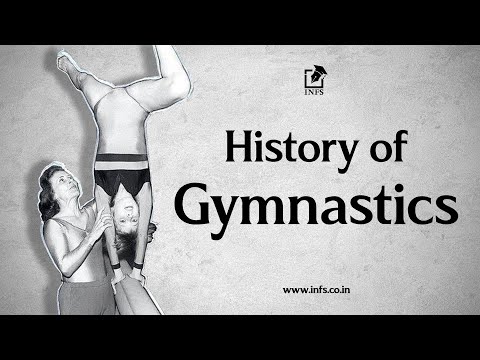What is the historical development of gymnastics
Gymnastics, derived from the Greek word “gymnazein,” meaning “to exercise naked,” has a rich and fascinating history that dates back thousands of years. Its origins can be traced back to ancient civilizations, where gymnastics was an integral part of physical education and military training.
Ancient Origins
Ancient civilizations, such as the Egyptians, Greeks, and Romans, recognized the importance of physical fitness and incorporated gymnastics into their daily lives. In ancient Egypt, gymnastics was used to prepare young men for military service. The Greeks, on the other hand, saw gymnastics as a way to develop the mind and body harmoniously.
The Olympic Connection
Gymnastics became an integral part of the Olympic Games when they were revived in 1896. The inclusion of gymnastics in the Olympics provided the sport with a global platform and helped to popularize it around the world.
How old is the sport of gymnastics
Gymnastics, as we know it today, has evolved over centuries. Its roots can be traced back to ancient Greece, where gymnastics was an essential component of education and physical fitness.
Ancient Greek Gymnastics
Ancient Greeks believed in the importance of physical education and developed a comprehensive system of gymnastics. Gymnastics in ancient Greece included a variety of activities, such as running, jumping, wrestling, and gymnastic exercises on apparatus like the pommel horse and parallel bars.
Modern Gymnastics
Modern gymnastics as a competitive sport began to take shape in the late 18th century. Friedrich Ludwig Jahn, often referred to as the “father of gymnastics,” played a crucial role in its development. Jahn introduced gymnastics exercises and apparatus, such as the horizontal bar and balance beam, and established the first gymnastics club in Germany in 1811.
What is the history of women’s artistic gymnastics
Women’s artistic gymnastics has a fascinating history that has evolved alongside the sport of gymnastics as a whole. While gymnastics was traditionally seen as a male-dominated activity, women’s participation in the sport has grown significantly over the years.
Early Beginnings
Women’s artistic gymnastics can be traced back to the 19th century when female gymnasts began to perform in exhibitions and competitions. The first recorded women’s gymnastics competition took place in 1864 in London, England.
Olympic Recognition
Women’s artistic gymnastics made its Olympic debut in the 1928 Amsterdam Games. Since then, it has become one of the most popular and highly anticipated events of the Olympic Games.
The Evolution of Gymnastics
Gymnastics has undergone significant changes and evolution throughout its history. From its ancient origins to modern-day competitive sport, gymnastics has adapted and grown in various ways.
Technological Advancements
Technological advancements have played a crucial role in the evolution of gymnastics. The introduction of new equipment, such as spring floors and high-performance apparatus, has allowed gymnasts to push the boundaries of what is possible in the sport.
Rule Changes and Scoring Systems
Over the years, gymnastics has seen numerous rule changes and revisions to its scoring systems. These changes have aimed to improve fairness, encourage innovation, and ensure the safety of gymnasts.
Gymnastics Curiosities
Oldest Gymnastics Club
The Turnverein Vorwärts Berlin, founded in 1848, is considered the oldest gymnastics club in the world. It played a crucial role in the development of gymnastics as a sport.
First Gymnastics World Championships
The first Gymnastics World Championships were held in 1903 in Antwerp, Belgium. The event featured only male gymnasts, and the competition included events such as the horizontal bar, parallel bars, and vault.
Youngest Olympic Gymnast
The youngest Olympic gymnast in history is Dimitrios Loundras from Greece. He competed in the 1896 Athens Olympics at the age of 10 years and 218 days.
Oldest Olympic Gymnast
The oldest Olympic gymnast is Oksana Chusovitina from Uzbekistan. She competed in the 2020 Tokyo Olympics at the age of 46 years and 37 days.
Frequently Asked Questions
How did gymnastics become an Olympic sport?
Gymnastics became an Olympic sport when the modern Olympic Games were revived in 1896. The inclusion of gymnastics in the Olympics helped to popularize the sport and provide a global platform for gymnasts to showcase their skills.
Who is considered the greatest gymnast of all time?
There are many gymnasts who are considered the greatest of all time, including Nadia Comaneci, Simone Biles, and Larisa Latynina. Each of these gymnasts has achieved remarkable success and made significant contributions to the sport.
What are the different disciplines of gymnastics?
Gymnastics is divided into several disciplines, including artistic gymnastics, rhythmic gymnastics, trampolining, and acrobatic gymnastics. Each discipline has its own unique set of skills, rules, and apparatus.
How do gymnasts train for competitions?
Gymnasts undergo rigorous training to prepare for competitions. They train for several hours each day, focusing on strength, flexibility, and mastering gymnastics skills. Training includes a combination of conditioning exercises, skill practice, and routine rehearsals.
Are there age restrictions in gymnastics?
There are age restrictions in gymnastics, particularly in elite-level competitions. The minimum age for senior competitions is usually 16 years old, while the minimum age for junior competitions is typically 14 years old. These age restrictions help to ensure the safety and well-being of young gymnasts.
How has the scoring system in gymnastics changed over the years?
The scoring system in gymnastics has undergone several changes over the years. In the past, a perfect score was 10.0, but in recent years, the scoring system has become more complex, with scores including both difficulty and execution components. The current scoring system aims to reward difficulty, execution, and artistry in routines.

